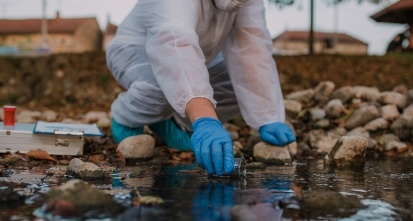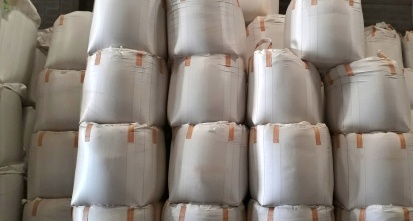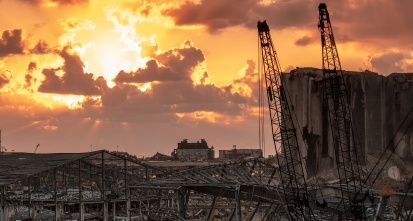Gain new perspectives for faster progress directly to your inbox.

Chemistry can be hazardous, and with so many people working in laboratories around the world, the impacts of even minor safety incidents add up. While individual organizations have strategies to prevent accidents, the safety data they gather is not always stored in an easily accessible way for day-to-day use. It’s just not feasible for scientists to read thousands of historical safety reports to find a mention of the compound they are about to use.
People working in labs often see safety incidents happen more than once. I clearly recall an incident that occurred in one lab I worked in (at a previous employer) that triggered a change in our whole approach. To carry out a reaction documented in a patent, trifluoroacetic acid had to be mixed with sodium borohydride to form a suspension of sodium trifluoroacetoxyborohydride. It turns out, that NaBH4 powder dissolves rapidly, resulting in an uncontrolled reaction that caused a fire. Pelletized NaBH4 would have reacted less vigorously.
The incident was communicated at a departmental safety briefing, but clearly the word had not gotten out, as the same thing occurred again four years later. I wondered, how can we capture safety lessons in a better way to ensure other scientists don’t have to learn the hard way? After some thought, it became clear that we need a practical way to integrate historical safety knowledge directly into our everyday laboratory workflows to prevent these types of avoidable incidents. But what could that look like in practical terms?
Safety Information, When it’s Needed
To close this gap, we needed to work out a way to gather safety information and add it to the lab process without requiring an additional burdensome step for the chemist. There were three variables that had to be considered: the information being shared, when it was delivered and how it was delivered.
We analyzed the workflow of our chemists using value-stream mapping to understand when they needed safety information and how this differed from when they were actually getting it. Typically, a chemist works by designing a reaction, procuring materials and finally synthesizing the product. It became clear that, to be most effective, safety information needed to be provided right before synthesizing the product,
We realized information from multiple sources, including the safety data sheet and institutional memory, could be fed into the Electronic Lab Notebook (ELN). Then, when a scientist planned to use certain compounds, the system could pop up saying, “Hey, be careful!” and provide relevant guidance, such as double-gloving or adding a safety screen. What’s more, the safety department could be notified by email if a chemist was planning on carrying out a potentially problematic reaction, so they could proactively advise on best practices and explore alternatives.
Expanding the Idea to the Wider Community
Implementing this system eliminated repeat incidents; using the ELN to seamlessly flag safety concerns at the point of synthesis proved to be a successful strategy. This was great news.
Safety is a top priority in all chemistry laboratories for scientists at the bench, their department, and the organization as a whole. After successfully implementing this system, I wanted to expand the same strategy across the whole scientific community, so that all chemists could benefit. But, to make the system as effective as possible, more safety information was needed. Therefore, I looked to work with an organization that could create a system all pharmaceutical companies could use to share their safety data. The vision was to create a pre-competitive, crowd-sourcing tool for chemical safety information.
The Pistoia Alliance is a global, not-for-profit membership organization working to facilitate innovation in life sciences research and development. In 2017, they initiated a pilot for a Chemical Safety Library (CSL), based on the system I had implemented previously, with the objective of gathering information on safety incidents submitted from across the chemical sector and providing the compiled database freely to the community to help prevent safety incidents. Upon release of the prototype, we discovered intense community interest in this type of data collection. But we also encountered reluctance to contribute incident information to the collection. Reasons varied, but included embarrassment, confidentiality concerns and data entry complexity.
The need was clear, and the more contributors that participated, the greater the impact would be. To expand the reach of this resource and address the limitations hindering participation, The Pistoia Alliance partnered with CAS, a division of the American Chemical Society that specializes in scientific information solutions, to deliver the new Pistoia Chemical Safety Library that was launched in October of last year. CAS, who developed and is hosting the new CSL platform, brings significant information management, technology and security expertise that allowed this new incarnation of the CSL to address the identified barriers. Data entry has been streamlined and simplified, and users can be confident that the data has been deidentified. The entire database is also available for organizations that want to integrate it for internal use, for example in an enterprise ELN. A CSL Advisory Panel, made up of representatives from the Pistoia Alliance, CAS and the wider chemical community, including Academia and Industry, also reviews the community entries and advises on policy and system improvements.
The Community Needs You
I am very excited to see this expanded resource come to life. For the first time, we have the technology to readily gather and disseminate safety information from the entire global chemical community. If we truly come together to crowdsource this collection, we can reduce reaction incidents and make the lab a safer place for tens of thousands of chemists across the world.
The new CAS-hosted version of the CSL already has had over 8,000 users from 96 countries since it launched. The ball is now in your court. Check out the CSL to see how it can help you stay safe, but please don’t stop there. If you have been involved in an incident or near miss, enter it into the CSL to let the whole world learn from your experience.
Help make our community safer today! Share your safety data with the CSL




